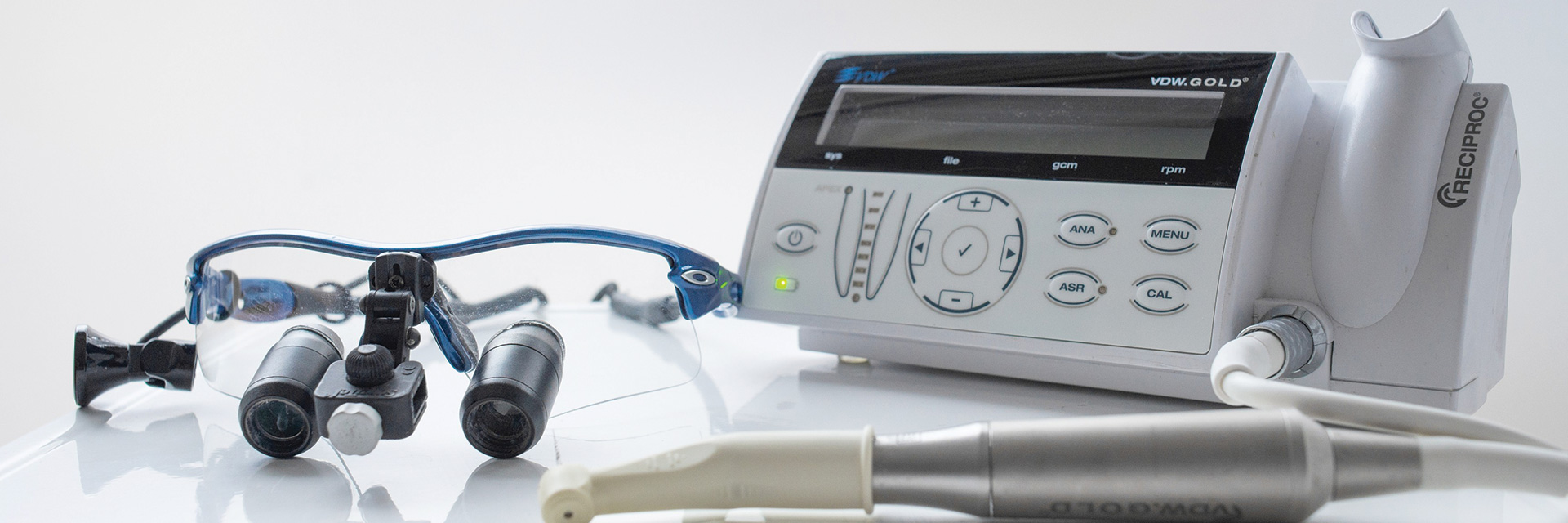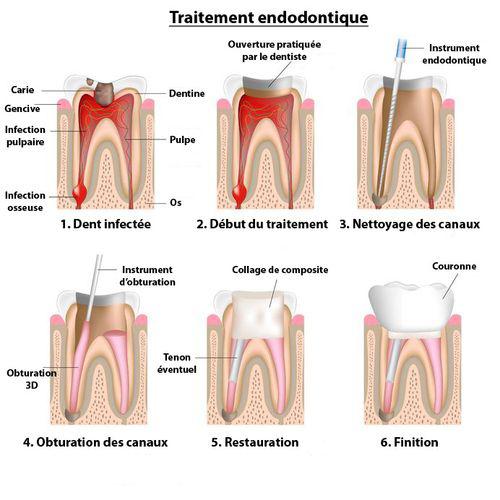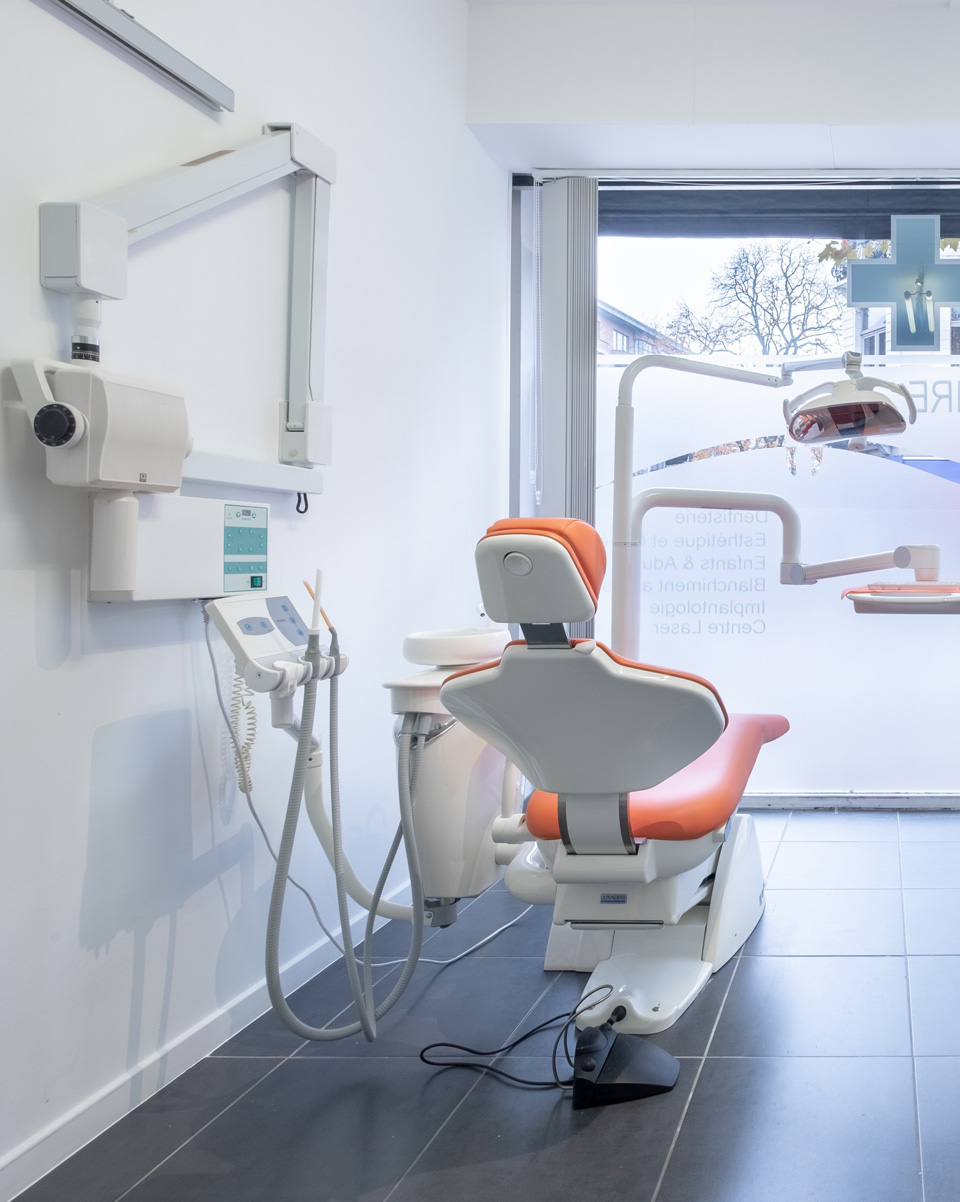Endodontics is a discipline that focuses on the long-term disinfection of ducts and isthmus within dental roots, where – in normal conditions – healthy pulp is encountered. In the past, this root canal procedure was wrongly referred to as “devitalisation”.

Several situations justify endodontic treatment:
Untreated tooth decay that leads to irreversible inflammation of the pulp, possibly with bone necrosis and infection (granuloma, cyst, abscess
A deep injury that reaches and opens the pulp
A more superficial injury in terms of appearance, but which disrupts blood supply in the pulp
Need for mechanical anchoring in a strategic root, during global prosthetic reconstruction

Endodontic treatment is usually carried out using a dental “operating field” or “dam”, which ensures a barrier between the endodontum and oral fluids. The following steps are followed:
Preparation for accessing the crown, possibly with a temporary reconstruction
Determining the length of each canal
Shaping using a range of specific single-use instruments, and simultaneous disinfection with various solutions (usually chlorine-based)
Filling with a three-dimensional system to mould the shape obtained within the roots

It is common for compromised teeth to require restoration using indirect techniques (inlay/onlay, crown).

